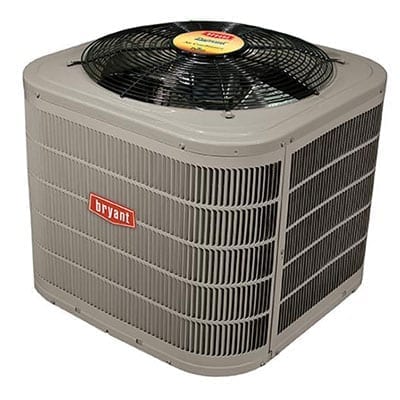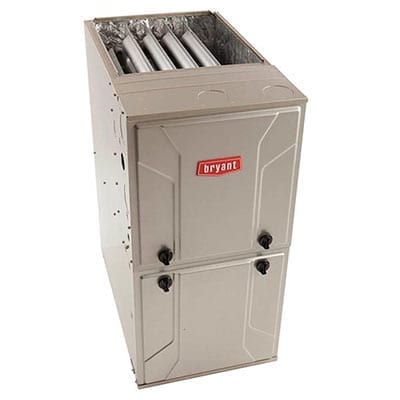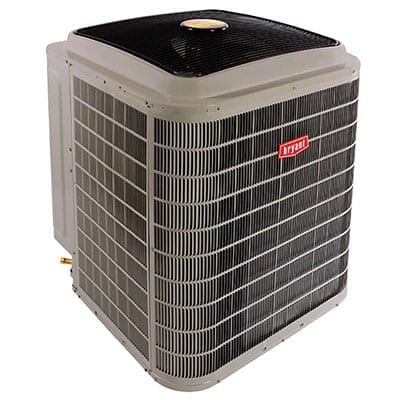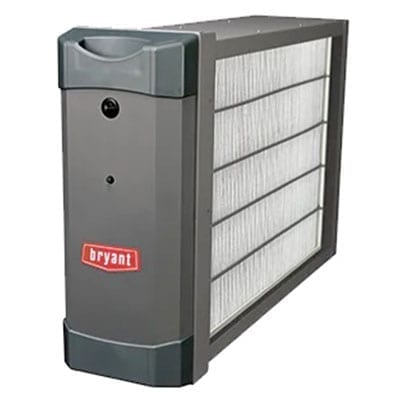Commercial HVAC for Grocery Stores
Commercial HVAC systems, including heat pumps and heat exchangers, are vital for maintaining optimal temperature and air quality in grocery stores with refrigerated cases and coolers. Refrigerated cases and display cases are essential equipment in commercial kitchens and supermarkets. These systems play a crucial role in ensuring food safety, customer comfort, and energy efficiency. The right commercial HVAC system, including refrigeration systems, heat pumps, economizers, and compressors, is essential for the smooth operation of convenience stores, contributing to business success. This blog post provides an insightful overview of the importance of commercial HVAC systems, including heat pumps and air handling units, in grocery stores. These equipment have a significant impact on both the operational and customer-facing aspects of these businesses, ensuring the circulation of cool air.
Understanding the Essentials of Grocery Store HVAC Systems
High Cooling Loads
Grocery stores require commercial HVAC equipment that can handle high cooling loads due to the large refrigeration units and continuous foot traffic. The systems must have a powerful compressor to efficiently cool the buildings and dissipate heat. These HVAC units must efficiently cool the space in commercial buildings while also managing the heat generated by lighting, cooking equipment, and people moving in and out of the store. For instance, during peak shopping hours or hot summer days, the demand for cooling in refrigeration systems and HVAC units increases significantly due to the heat.
Maintaining Humidity Control in commercial buildings is one essential function of HVAC systems. These systems use a compressor to regulate the heat and cool air, ensuring the right humidity levels are maintained. This is particularly important in grocery stores. The HVAC unit needs to maintain specific moisture levels to preserve food quality and prevent issues such as mold growth. This requires regular commercial HVAC maintenance, including checking the compressor and heat levels. Without proper humidity control, perishable items like fruits, vegetables, and bakery products can deteriorate quickly in refrigeration systems. The heat generated by the HVAC unit can also affect the quality of these items. It is important to ensure that the ventilation system is functioning properly to maintain optimal conditions for storage. Excessive heat and moisture in commercial buildings can make customers uncomfortable while shopping. This is why having a well-designed commercial HVAC system is crucial for maintaining a comfortable shopping environment.
Proper ventilation is crucial for commercial HVAC systems in buildings, including grocery stores, to ensure fresh air circulation and prevent the buildup of odors and contaminants. HVAC design plays a key role in maintaining the right temperature and removing heat from these spaces. An effective HVAC system should continuously bring in outdoor air to regulate the heat inside the building while exhausting stale indoor air. This ensures that the unit is able to maintain a comfortable and healthy indoor environment. This process helps remove pollutants from cleaning chemicals, cooking activities at deli counters or bakeries, as well as any fumes from damaged products or spills that could affect indoor air quality in a commercial HVAC system.
Key Components & Functions
The key components of a commercial HVAC system for grocery stores include compressors, evaporators, condensers, fans/blowers, filters/driers/strainers (for refrigerant), thermostats/controllers/sensors (to monitor temperature/humidity), ductwork/vents/grilles (for airflow distribution), insulation (to minimize energy loss), and heat units. These commercial HVAC components work together to regulate heat levels effectively throughout different areas of the building. The unit ensures proper temperature control.
Efficient Operation Efficiency is paramount for commercial HVAC units, considering their continuous operation throughout business hours. The heat generated by these units is crucial for maintaining a comfortable building environment. Energy-efficient commercial HVAC models help reduce operational costs by optimizing heat performance while minimizing energy consumption in a building. For example: investing in variable speed drives for fans can adjust airflow based on demand rather than running at full capacity all the time. This is especially beneficial for commercial HVAC systems in buildings, as it helps regulate heat efficiently.
Energy-Efficient HVAC Solutions for Food Retail
Significantly Reduce Operating Costs
Energy-efficient commercial HVAC systems play a crucial role in reducing operating costs for grocery stores by efficiently managing heat and maintaining a comfortable building environment. By investing in commercial HVAC systems, store owners can save a substantial amount of money on energy bills by efficiently controlling the heat in their buildings. For instance, the use of advanced technologies such as variable refrigerant flow (VRF) systems and energy recovery ventilators (ERV) in commercial HVAC systems can lead to significant savings by optimizing energy consumption and improving heat distribution within a building.
Implementing an energy-efficient HVAC system allows grocery stores to minimize their environmental impact while also benefiting financially. This is because an energy-efficient HVAC system helps to regulate the heat within the store, reducing energy consumption and costs. These commercial HVAC solutions are designed to regulate heat, temperature, and humidity levels effectively, ensuring optimal conditions for preserving food quality and enhancing customer comfort. As a result, operational expenses related to commercial HVAC, heating, ventilation, and air conditioning are notably reduced, contributing to overall cost-effectiveness.
Technologies Enhancing Energy Efficiency
In the context of grocery stores, several cutting-edge commercial HVAC technologies contribute to improving energy efficiency within the premises. For example, commercial HVAC VRF systems enable precise control over cooling and heating operations in different zones of the store based on specific requirements at any given time. This zoning capability ensures that only occupied areas in commercial HVAC receive conditioned air or heat, leading to reduced energy wastage.
Furthermore, commercial HVAC ERVs enhance energy efficiency by recovering thermal energy from exhaust air and transferring it into incoming fresh air streams. This process helps maintain consistent indoor temperatures while minimizing the workload on HVAC equipment. Consequently, commercial HVAC ERVs promote substantial energy savings by reducing the demand for additional heating or cooling power during peak operating hours.
Optimizing Air Quality and Ventilation in Supermarkets
Importance of Indoor Air Quality
Indoor air quality is crucial in ensuring a healthy environment for both customers and employees in commercial HVAC settings. Adequate ventilation, especially with a commercial HVAC system, helps eliminate airborne pollutants, creating a safe space within the supermarket. With advanced air filtration systems, commercial HVAC supermarkets can significantly improve their indoor air quality, promoting customer comfort and employee well-being.
Improving indoor air quality is essential for maintaining food safety standards within the store, especially when it comes to commercial HVAC. Proper ventilation in commercial HVAC systems ensures that any odors from food products or waste are efficiently removed, preventing cross-contamination and preserving the freshness of perishable items such as fruits, vegetables, and meats.
Strategies to Enhance Ventilation Systems
Implementing effective strategies to optimize ventilation in grocery stores involves utilizing various methods such as installing energy-efficient HVAC systems that provide a constant supply of fresh outdoor air while effectively removing stale indoor air. Incorporating air curtains at entrances can help prevent temperature fluctuations in commercial HVAC systems by blocking outside heat during summer and retaining cool air during winter.
Moreover, integrating commercial HVAC exhaust hoods above cooking areas aids in eliminating excess heat, smoke, grease particles, and odors generated by kitchen activities. These commercial HVAC hoods play a pivotal role in maintaining optimal indoor air quality by expelling contaminants produced during food preparation processes.
Enhancing ventilation in a commercial HVAC system also encompasses regulating humidity levels within the store to create a comfortable shopping environment while safeguarding commercial HVAC products on display shelves or inside refrigerated cases from potential damage caused by excessive moisture.
Refrigeration and Food Storage HVAC Considerations
Importance of Proper Refrigeration
Proper refrigeration is vital for preserving the freshness and quality of perishable food items in grocery stores, especially when it comes to commercial HVAC systems. Commercial HVAC systems play a crucial role in extending the shelf life of products, ensuring that customers have access to high-quality goods. Without effective commercial HVAC refrigeration, food items may spoil quickly, leading to wastage and financial losses for the store.
Refrigerated cases, freezers, coolers, and food preparation areas all rely on well-maintained refrigeration systems. These systems should be equipped with reliable evaporator coils and chillers to ensure consistent cooling throughout different storage areas. By maintaining optimal temperatures, grocery stores can minimize product spoilage and provide customers with fresh produce.
Unique HVAC Considerations for Supermarkets
Grocery store HVAC systems must be designed to cater specifically to the unique needs of refrigeration and food storage areas. Unlike typical commercial spaces, supermarkets require precise temperature control in various zones such as dairy sections, meat departments, produce aisles, and frozen food displays.
Understanding the distinct requirements of each area is crucial when designing an efficient HVAC system for a supermarket. For instance:
-
The dairy section requires cooler temperatures than other parts of the store.
-
Meat departments need specialized refrigeration solutions due to strict temperature regulations.
-
Produce aisles demand humidity control along with consistent cooling.
By considering these factors during system design or upgrades ensures that perishable goods are stored at their optimal conditions which extends their shelf life while reducing waste.
Designing Effective HVAC Layouts for Supermarkets
Store Size and Layout
Commercial HVAC design for grocery stores must consider the store’s size and layout. Larger stores require more powerful systems to ensure consistent cooling throughout the space, while smaller ones may need less robust setups. The layout of the store also plays a crucial role in determining where vents and units should be placed to maximize airflow and temperature control.
For example, a large supermarket with multiple aisles will need strategically placed vents to ensure that all areas receive adequate cooling. On the other hand, a smaller grocery store with an open layout may benefit from centralized HVAC units located at strategic points to efficiently cool the entire space.
Zoning is another important aspect of commercial HVAC design for grocery stores. By dividing the store into different zones, each with its own thermostat and controls, it becomes possible to customize temperature settings based on specific needs within various sections of the supermarket. For instance, refrigerated food display areas will have different cooling requirements compared to non-refrigerated sections such as checkout counters or produce displays.
Specific Cooling Requirements
Different areas within a grocery store have specific cooling requirements, which must be factored into the HVAC design. For instance, perishable food storage areas like meat and dairy departments require precise temperature control to maintain product freshness and safety standards. Hot food deli counters necessitate proper ventilation systems to remove cooking odors and maintain comfortable temperatures for both staff and customers.
Proper air circulation is essential not only for maintaining optimal temperatures but also for ensuring good indoor air quality throughout the supermarket. Efficient air distribution helps prevent stale air pockets in certain parts of the building while promoting consistent comfort levels across all customer-accessible spaces.
Innovative Controls and Monitoring for Grocery HVAC Systems
Precise Temperature and Humidity Control
Advanced controls and monitoring systems play a crucial role in maintaining precise temperature and humidity levels within grocery stores. These systems ensure that perishable items such as fruits, vegetables, dairy products, and meats are stored under optimal conditions to prolong their shelf life. By utilizing innovative controls, grocery store owners can create an environment that is conducive to preserving the freshness of their products.
The ability to regulate humidity control is particularly essential. For instance, delicate fruits like berries require specific humidity levels to prevent them from drying out or becoming too moist. With advanced monitoring technology, store owners can ensure that the systems are constantly maintaining the ideal humidity level for these perishable items.
Real-Time Analysis and Energy Optimization
Remote monitoring capabilities offered by modern HVAC systems enable real-time analysis of performance metrics. This means that store managers can access data regarding temperature fluctuations, energy consumption patterns, and potential issues with the HVAC system from any location at any time. By having this information at their fingertips, they can promptly address any anomalies or inefficiencies within the system.
Moreover, these advanced controls allow for proactive measures in optimizing energy usage. For example, if there’s a sudden spike in energy consumption during non-peak hours, remote monitoring alerts personnel about potential malfunctions in the HVAC system’s components such as coils or fans. This empowers them to take immediate action before significant energy wastage occurs.
Latest Innovations in Technology
Exploring the latest innovations in controls and monitoring technology offers an exciting prospect for enhancing grocery store HVAC systems further. One notable advancement involves integrating smart sensors into the HVAC infrastructure to gather comprehensive data on environmental conditions within the store premises.
These smart sensors not only provide insights into temperature and humidity levels but also monitor air quality parameters such as carbon dioxide (CO2) levels. This holistic approach enables grocery store owners to maintain a healthy indoor environment while ensuring optimal conditions for their merchandise simultaneously.
In addition:
-
Smart thermostats with intuitive interfaces have simplified temperature adjustments.
-
Wireless connectivity allows seamless integration between various components of the HVAC system.
-
Predictive maintenance features help preemptively identify potential issues before they escalate.
By incorporating these cutting-edge technologies into commercial refrigeration units’ design layout discussed earlier; grocers stand poised to elevate operational efficiency while upholding product quality standards.
Maintenance and Upkeep of Commercial HVAC in Grocery Stores
Importance of Regular Maintenance
Regular commercial HVAC maintenance is crucial for ensuring the longevity and efficiency of heating, ventilation, and air conditioning systems in grocery stores. Without proper upkeep, these systems can experience reduced performance, increased energy consumption, and even potential breakdowns. By conducting routine maintenance, grocery store owners can prevent costly repairs and maintain a comfortable environment for their customers.
It’s essential to understand that regular maintenance involves more than just fixing issues when they arise. It encompasses proactive measures such as cleaning components, replacing filters, inspecting ductwork, and ensuring that all parts are functioning optimally. For instance, by replacing air filters at recommended intervals, grocery store owners can prevent dust accumulation within the system which could otherwise hinder airflow.
Properly maintained commercial HVAC systems contribute to a healthier indoor environment by improving air quality through efficient filtration. This is particularly important in spaces like grocery stores where there’s a constant flow of people coming in and out. With clean air filters in place as part of regular maintenance routines, the system can effectively remove contaminants from the air.
Scheduled Inspections and Maintenance Tasks
Scheduled inspections play a vital role in identifying any potential issues with commercial HVAC systems before they escalate into major problems. These inspections enable technicians to detect early signs of wear or malfunctioning components so that corrective action can be taken promptly.
In addition to visual inspections by trained professionals on a regular basis (quarterly or semi-annually), it’s also crucial to adhere to scheduled tasks such as lubricating moving parts or calibrating controls where necessary. These preventive measures help ensure that the entire system operates smoothly without any undue strain on its components.
Moreover, maintaining an optimal temperature within the store not only ensures customer comfort but also plays a key role in preserving perishable goods such as fruits, vegetables, dairy products etc., thereby minimizing food spoilage risks while maximizing shelf life.
By prioritizing scheduled inspections along with routine maintenance tasks for their commercial HVAC systems,grocery storeowners can uphold operational efficiency while providing a comfortable shopping environment for their customers.
Common Challenges and Solutions in Grocery Store HVAC
Temperature Control
Balancing temperature control between refrigerated areas and customer shopping areas is a significant challenge in grocery stores. The cold storage units need to maintain low temperatures to preserve perishable items, while the shopping areas require comfortable conditions for customers. This creates a delicate balance that can be challenging for HVAC systems to achieve. If the refrigerated sections are too warm, it can lead to spoilage of food products, while overly cold customer areas can deter shoppers.
Finding solutions involves using zone control systems that allow different parts of the store to have separate temperature settings. For example, advanced commercial HVAC systems use sensors and dampers to regulate airflow and temperature independently in various zones within the store. By doing so, they ensure precise climate control tailored to each area’s specific requirements.
Another solution lies in utilizing energy-efficient equipment such as smart thermostats, which help monitor and adjust temperatures more effectively based on real-time data. These advancements aid grocery stores in maintaining optimal conditions throughout their premises without compromising on energy consumption or cost.
Humidity Management
Addressing humidity issues is crucial for preventing condensation and mold growth in supermarkets. Excessive moisture levels can lead to slippery floors, musty odors, and even damage merchandise if left unattended.
One effective solution is implementing dehumidification systems within the HVAC setup specifically designed for grocery stores’ unique needs. These systems work by extracting excess moisture from the air before it has a chance to accumulate on surfaces or cause discomfort for customers or staff members.
Moreover, regular maintenance of HVAC components like evaporator coils helps prevent excess moisture buildup due to dirt or debris accumulation. Keeping these components clean ensures efficient dehumidification processes are maintained consistently throughout the store environment.
Efficient System Maintenance
Solutions also revolve around addressing common challenges faced in maintaining an efficient HVAC system in grocery stores. Regular professional inspections play a critical role here as they enable early detection of potential issues such as worn-out parts or clogged filters that could hinder system performance over time.
Implementing proactive maintenance schedules ensures that any underlying problems are identified promptly before they escalate into major disruptions affecting overall system efficiency.
Enhancing Efficiency with Advanced HVAC Technologies
Smart Thermostats and Automated Controls
Smart thermostats and automated controls play a crucial role in optimizing energy usage within grocery store HVAC systems. These advanced technologies enable precise temperature regulation, ensuring that the system operates at maximum efficiency. For instance, smart thermostats can adjust settings based on occupancy patterns and outdoor weather conditions, reducing unnecessary energy consumption.
Implementing these technologies can result in substantial cost savings for grocery stores by minimizing energy costs associated with heating, ventilation, and air conditioning. By integrating smart thermostats and automated controls into their HVAC units, grocery stores can create a comfortable shopping environment while significantly reducing their overall energy consumption.
Heat Recovery Systems
Heat recovery systems are another innovative solution that enhances the efficiency of commercial HVAC systems in grocery stores. These systems harness waste heat generated by refrigeration units to provide supplementary heating or cooling for the store’s interior spaces. By capturing this otherwise wasted thermal energy, heat recovery systems contribute to a more sustainable operation while lowering energy usage.
For example, when a refrigeration unit expels heated air during its normal operation, a heat recovery system can capture this excess warmth and repurpose it for water heating or space heating within the store. This process not only reduces the reliance on traditional heating methods but also decreases the demand on primary HVAC equipment.
Conclusion on Maximizing HVAC Performance in Grocery Stores
The optimization of HVAC systems in grocery stores is paramount for maintaining the quality and safety of perishable goods while ensuring a comfortable shopping environment. By understanding the essentials of grocery store HVAC systems, implementing energy-efficient solutions, optimizing air quality, and addressing refrigeration considerations, supermarkets can significantly enhance their operational efficiency and reduce environmental impact. Designing effective layouts, utilizing innovative controls, and prioritizing maintenance further contribute to sustainable HVAC performance.
For grocery store owners and facility managers, staying abreast of advanced HVAC technologies and common challenges is crucial for continuous improvement. Embracing these insights and implementing best practices can lead to substantial cost savings, improved customer experience, and a reduced carbon footprint. As the grocery industry continues to evolve, leveraging these strategies will be instrumental in achieving long-term success and environmental responsibility.
Frequently Asked Questions
What are the key HVAC considerations specific to grocery stores?
Grocery store HVAC systems need to account for maintaining optimal temperature and humidity levels, preventing food spoilage, and ensuring air quality. They must accommodate refrigeration needs while managing energy efficiency.
How can energy-efficient HVAC solutions benefit grocery stores?
Energy-efficient HVAC solutions can help grocery stores reduce operational costs by lowering energy consumption. These solutions also contribute to environmental sustainability and may qualify for utility rebates or incentives.
What are the common challenges faced in maintaining commercial HVAC systems in grocery stores?
Common challenges include balancing temperature control with high customer traffic, managing diverse refrigeration requirements, addressing ventilation needs for fresh produce areas, and ensuring consistent air quality throughout the store.
How do advanced HVAC technologies enhance efficiency in grocery stores?
Advanced technologies such as smart controls, variable refrigerant flow (VRF) systems, and demand-controlled ventilation enable precise monitoring and adjustment of heating, cooling, and ventilation functions. This results in optimized energy usage and improved overall system performance.
Why is it essential to optimize air quality and ventilation in supermarkets?
Optimizing air quality is crucial for preserving food freshness while providing a comfortable shopping environment. Proper ventilation helps remove odors, airborne contaminants, excess moisture from perishable goods areas while promoting a healthy indoor atmosphere for customers and staff.
Related Information
Commercial HVAC for Herbal Medicine Stores
Commercial HVAC for Hat Shops
Commercial HVAC for Hair and Beauty Salons
Commercial HVAC for Gyms and Fitness Centers
Commercial HVAC for Gift Shops
Commercial HVAC for Gardening Centers
Commercial HVAC for Game Stores
Commercial HVAC for Furniture Stores
Commercial HVAC for Florists
The Primary Services Provided By Our Local HVAC Company
Areas We Service
Click on the area below to see what your neighbors are saying about their recent experiences with our company.
Our Locations
14913 SE Kellogg Ave
Milwaukie, OR 97267, USA
4409 SE 24th Ave, Suite 35
Portland, OR 97202, USA




